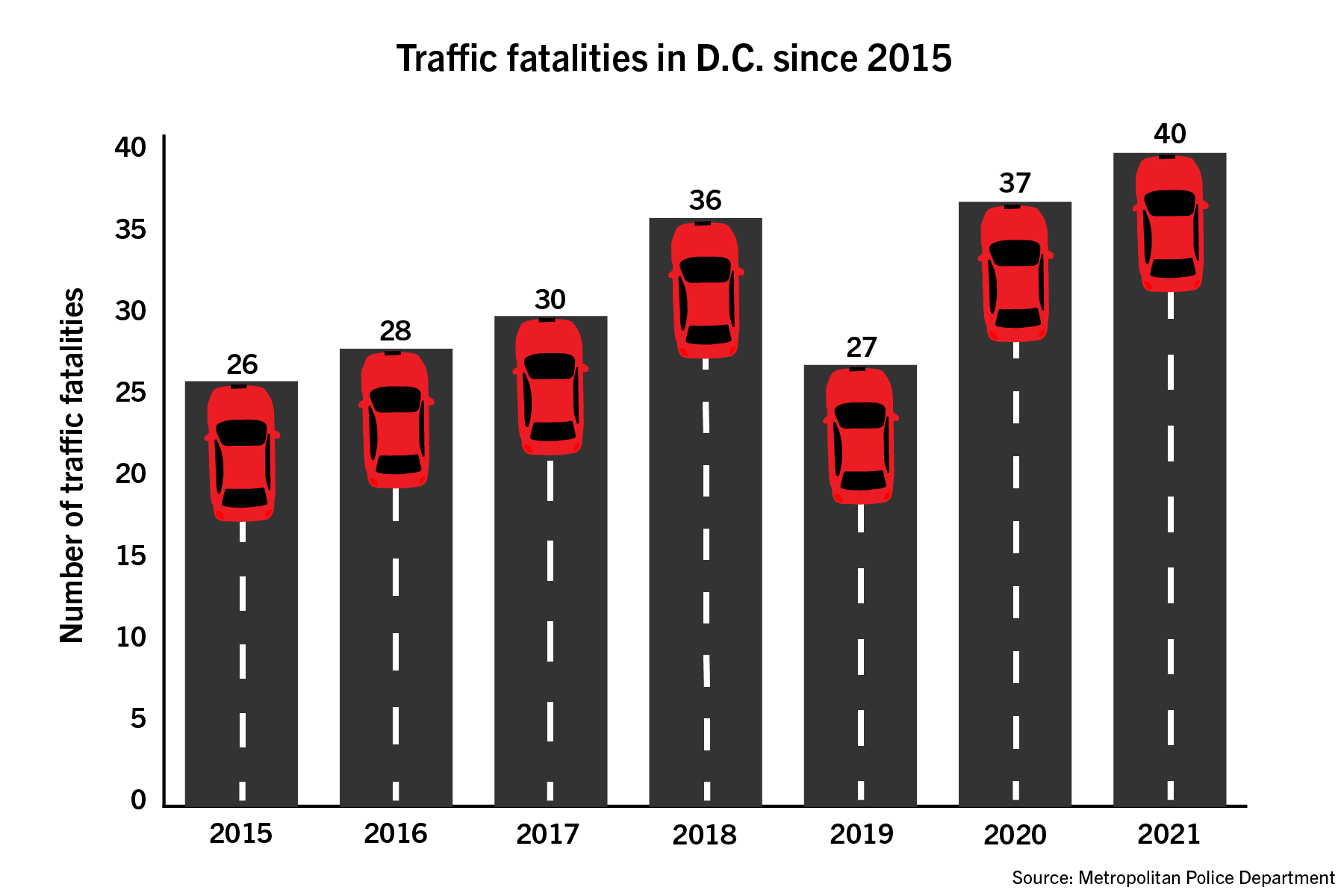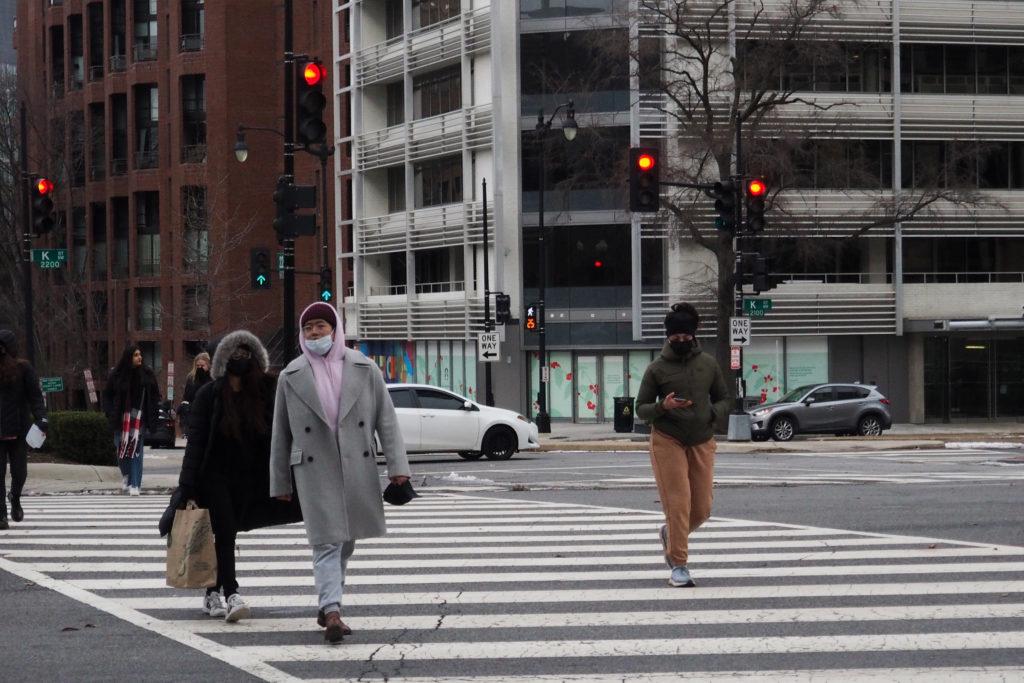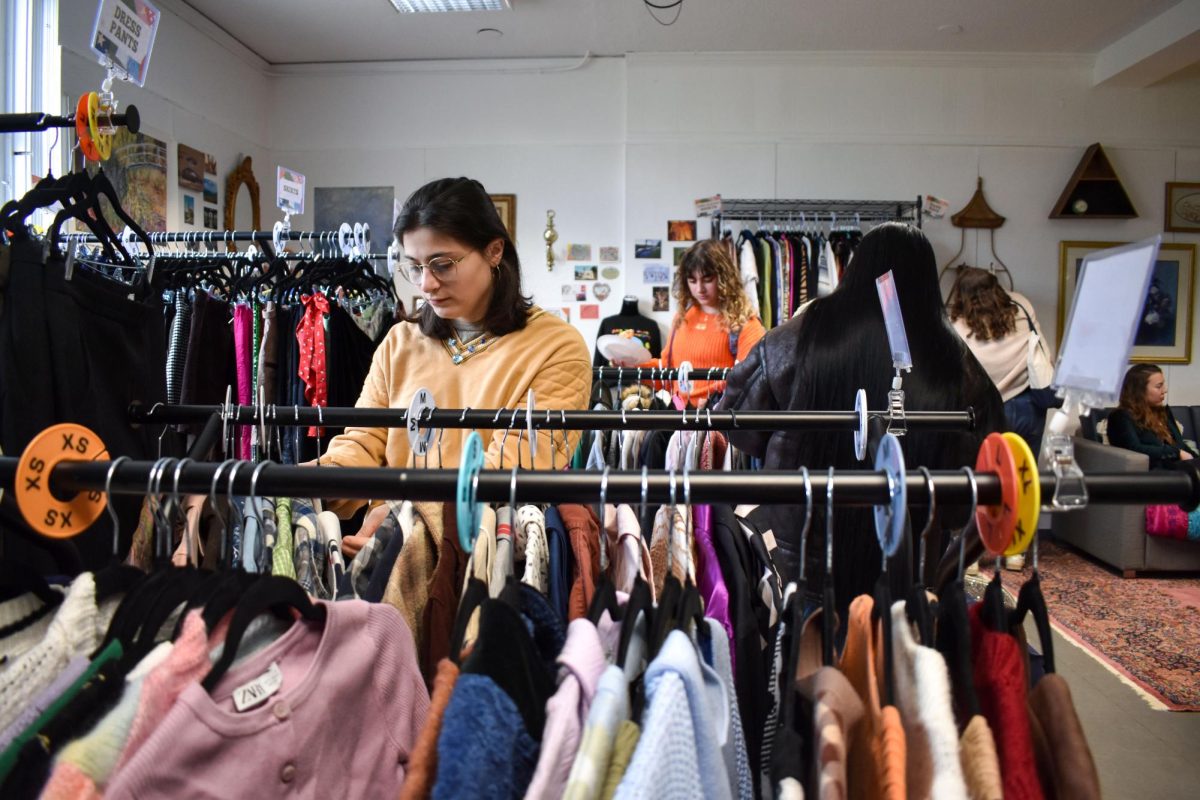Seven years ago, Mayor Muriel Bowser pledged to work toward eliminating traffic fatalities by 2024. Last year, the District tallied the highest number of traffic deaths the city had seen in 14 years.
The Metropolitan Police Department recorded 40 traffic fatalities in 2021, three more than in 2020 and the most since 2007 when 54 people were killed on D.C. roads. The uptick in deaths comes as the Vision Zero Initiative, a program that Bowser created in 2015 in hopes of eliminating all traffic fatalities in the city, undergoes an audit initiated by the D.C. government because of alleged poor performance.
Six of the 40 deaths occurred in Ward 2, tied for second-most behind Ward 7. District data shows the nearest traffic death to Foggy Bottom occurred in March after a vehicle struck and killed a pedestrian on Virginia Avenue near 25th Street.
Locals and traffic experts said weaker traffic law enforcement because of the COVID-19 pandemic and unreliable public transportation alternatives, like Metrorail delays related to the suspension of 7000-series railcars, likely were the cause of the increase in traffic fatalities.

Nicholas Anastacio | Graphics Editor
Jeri Epstein, the chair of the Foggy Bottom and West End Advisory Neighborhood Commission, said the District’s decision to not have police conduct minor duties, like handing out speeding tickets, to avoid the spread of COVID-19 left pedestrians crossing the street more vulnerable to more reckless driving. She said the pandemic has also left the streets relatively empty, allowing cars to reach higher speeds that can be more dangerous.
“We need to make a safe environment for people who are coming back to school, and assuming most people are coming back to GW, that means there’s a lot of people who will be crossing at the same time,” she said.
Epstein said more locals have started driving because of Metro’s recent service reductions since October. She said without reliable public transit tools like the 7000-series railcars on the Metro and enough bus drivers because of COVID-19 infections, the city can’t achieve the mission of the Vision Zero Initiative, which is based on decreasing the city’s reliance on cars.
The Metro sidelined its 7000-series railcars, more than half of the Metro’s train fleet, because of wheel issues after a Blue Line derailment near Arlington Cemetery in October, and Metrobuses have been operating on reduced schedules because of bus driver shortages caused by the spread of the Omicron variant. Eight of the 40 fatalities occurred in the two and a half months after the Metro pulled 7000-series trains, according to District data.
“With the 7000-series still out, getting on to Metro is very difficult,” she said. “Without good public transportation, we are not offering alternatives to anybody. And the mayor, the city, everybody wants to see that back, but it needs to be done safely.”
The Office of the D.C. Auditor opened a 10-month investigation into the Vision Zero Initiative in September after a steady rise in fatalities followed its start in 2015. During the past three years, the District Department of Transportation has built more bike lanes, lowered speed limits and banned right turns on red lights in high-risk intersections as part of the program, but the number of deaths has continued to climb.
Evan Yeats, an ANC commissioner from the Takoma neighborhood and a co-chair of a Vision Zero-focused committee in his ANC, said officials need to redesign city streets to discourage dangerous driving with speed bumps and make them safer for pedestrians and cyclists. Yeats said controlling traffic with speed bumps and other tricks to make cars slow down in highly trafficked areas like schools and libraries can prevent crashes.
Yeats said the city needs to expand access to high quality public transportation as an alternative to driving amid the service reductions troubling Metrorail and Metrobus.
“We can build an environment where it’s difficult for vehicles to drive in our community in ways that can hurt and kill people,” he said. “I think primarily, and especially around schools and rec centers and libraries, the engineered and built environment should make it very difficult for people to behave in a manner that causes fatalities or death.”
The increase in traffic deaths is part of a national trend that started during the pandemic. Traffic deaths across the country increased by about 18.4 percent in the first half of 2021 in comparison to the same time frame in 2020, partly because of dangerous behaviors that increased during the pandemic, like speeding and driving without a seatbelt, according to an analysis from the National Highway Traffic Safety Administration.
Kristen Metzger, a spokesperson for the Metropolitan Police Department, said the nationwide increase in traffic deaths is partly the result of increased speeds caused by relatively empty roads during the pandemic. Metzger said MPD introduced safety measures in November that focused on traffic law enforcement near schools after multiple children were struck by vehicles in highly publicized incidents in September and October.
“In November 2021, MPD announced new traffic safety enhancements around school areas within each of our districts to target traffic enforcement and education in and around these areas before school arrival and after school dismissal,” she said in an email. “Our hope is that this focused enforcement will ensure the safety of our young people traveling to and from school as well as educate all roadway users.”
Igor Linkov, an adjunct professor of engineering and public policy at Carnegie Mellon University and the senior scientific technical manager at the U.S. Army Engineer Research and Development Center, said the lack of resilient roads in D.C. could falter in handling adverse weather conditions or significant traffic and contribute to the increase in traffic fatalities. Linkov said D.C. was ranked as one of the cities with the least resilient roads in the country, according to a 2017 study he conducted with five other colleagues.
“Resilience may be viewed as one way to reduce fatalities specifically related to traffic,” he said.







